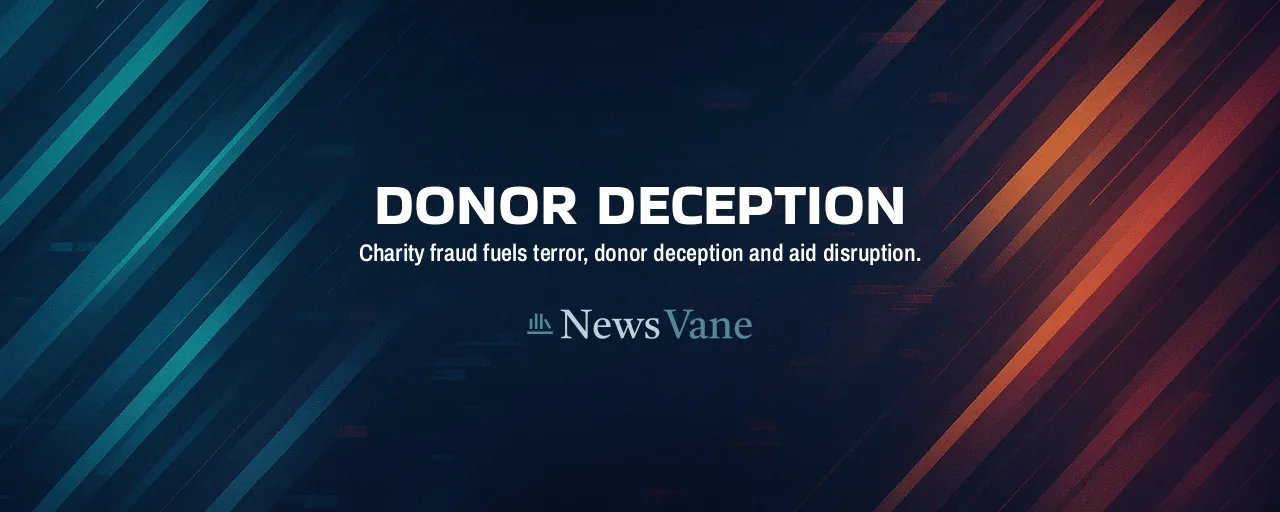The Mask of Compassion
Charities embody hope, channeling aid to those caught in crisis. Yet, some conceal a grim reality. On June 10, 2025, the U.S. Treasury Department's Office of Foreign Assets Control (OFAC) named five individuals and five organizations, from Gaza to the Netherlands, as fronts for funneling money to the military wings of Hamas and the Popular Front for the Liberation of Palestine (PFLP). These groups exploit donors' goodwill to bankroll terrorism, betraying the very people they claim to help.
The problem runs deep. According to the Treasury's 2024 National Terrorist Financing Risk Assessment, terrorist networks routinely set up fake non-profits to mask their activities. These sham charities blend seamlessly with legitimate ones, making detection a challenge. For donors, the realization hits hard: their contributions, intended for suffering civilians, often end up arming violence.
The urgency is undeniable. Hamas, designated a terrorist group by the U.S. in 2001, and the PFLP, designated in 1997, have long manipulated charities. The October 7, 2023, Hamas attack, which killed many and took hostages, including Americans, amplified the need to disrupt their funding. But clamping down without choking off genuine aid demands a delicate balance.
The problem of aid diversion has persisted. Since the early 2000s, armed groups in places like Syria and Somalia have diverted aid, exposing gaps in oversight. A 2018 USAID audit uncovered $700 million in unvetted awards in Iraq and Syria, with some supplies reaching groups like Hay'at Tahrir al-Sham. In Gaza, Hamas's influence over aid distribution complicates efforts to ensure donations reach those in need.
How the Schemes Work
These operations are cunning yet straightforward. Gaza's Al Weam Charitable Society, controlled by Hamas, employs figures like Muhammad Sami Muhammad Abu Marei, a military operative who solicits funds from unaware donors. In Türkiye, Filistin Vakfi, under Zeki Abdullah Ibrahim Ararawi, launched campaigns to support Hamas's military after the 2023 attack, cloaking its intent in humanitarian rhetoric.
The pattern repeats globally. Algeria's El Baraka Association, led by Ahmed Brahimi, redirected donations meant for civilians to Hamas. The Netherlands' Israa Charitable Foundation, tied to the Hamas-linked Union of Good, moved millions through operatives like Amin Ghazi Abu Rashed. In the West Bank, Addameer Prisoner Support and Human Rights Association, aligned with the PFLP, facilitates fund transfers. Secrecy is their shield, hiding militant ties to keep donations flowing.
The numbers are staggering. U.S. assessments estimate Hamas rakes in up to $10 million monthly through such fronts. Globally, terrorists have embraced new tactics, crowdfunding, cryptocurrency, and local taxation, to dodge scrutiny. These shifts challenge regulators, who struggle to adapt traditional banking-focused tools to track evolving threats.
Sanctions' Power and Pitfalls
The U.S. wields sanctions as a weapon. Under Executive Order 13224, OFAC freezes assets and bars transactions with named individuals and groups. The June 2025 designations locked down U.S.-based property of the targeted charities and their leaders, warning global banks to comply or face penalties. In 2023 alone, OFAC added 2,500 new designations, reflecting a surge in targeting terrorist financing.
Sanctions deliver results. They've immobilized millions, including $6 million in al-Qaida assets by 2018, and curtailed formal funding for groups like Hamas. Partnerships with allies, like joint 2024 actions with the UK and Australia, strengthen the impact, building on global frameworks like the UN's 1999 anti-terror financing convention. Yet, sanctions drive terrorists to informal channels, like cash couriers, which are tougher to monitor.
There's a downside. Sanctions can disrupt aid delivery. In Gaza, where Hamas holds sway, banks wary of violations may restrict transactions, delaying critical supplies. In Somalia, a UN investigation found 30% of World Food Programme rations reached al-Shabaab, prompting suspensions that harmed civilians. Precision is vital to avoid punishing the vulnerable alongside the guilty.
Navigating Security and Aid
The clash between security and humanitarian goals is stark. Some advocate for tough sanctions to starve terrorist funds, citing how they force groups into riskier financing. Others argue that broad restrictions burden legitimate non-profits with compliance costs, slowing aid to those in need. In Syria, banks' caution has delayed relief, leaving civilians caught in the crossfire.
Solutions are emerging, but they're complex. Enhanced vetting, remote monitoring, and third-party audits can reduce diversion, though security risks limit on-site checks in places like Gaza. Global bodies like the Financial Action Task Force urge stronger non-profit oversight, while UN and World Bank programs train nations to track illicit funds. Still, differing legal systems and trust gaps hinder seamless cooperation.
Donors expect their generosity to alleviate suffering, avoiding any prolongation of conflict. Policymakers must craft systems that expose fraud without strangling legitimate relief efforts.
A Path Forward
The battle against fake charities continues. Terrorist groups evolve, and global strategies adapt. Initiatives like INTERPOL's Silver Notice pilot aim to trace illicit funds across borders, while the UN's 2026 Crime Congress will prioritize secure data sharing to plug enforcement gaps.
The June 2025 sanctions signal resolve: exploit humanitarian cover, and face consequences. Yet, the broader task remains, preserving trust in charities while eliminating abuse. It's a tough road, requiring precision, global teamwork, and a commitment to both security and human welfare.
For ordinary donors, the stakes are personal. They give to ease pain, ensuring their contributions do not fuel violence. The hope is a future where every dollar donated brings relief to those who need it most, free from the shadow of terror.
